Pawning Diamond
If you have diamond jewellery that you want to pawn, you can visit any pawn shop in the Pawnzon network. Our pawn shops accept diamond jewellery in all forms, with or without a diamond certificate.
Not sure how much your diamond jewellery is worth? No need to worry, please continue reading because we will be explaining more about diamonds in the following section.
HOW IS THE PRICE OF A DIAMOND DETERMINED?
Many people assume that carat is the only factor that determines the price of a diamond, this assumption is actually untrue. In general, the price of a diamond is determined/influenced by the 4Cs, namely the cut, color, carat and clarity of the diamond.
Here, we will explain in more detail how each of these factors affects the price of a diamond. After reading this article, you will have a deeper understanding of diamonds and how their price is determined as a whole.
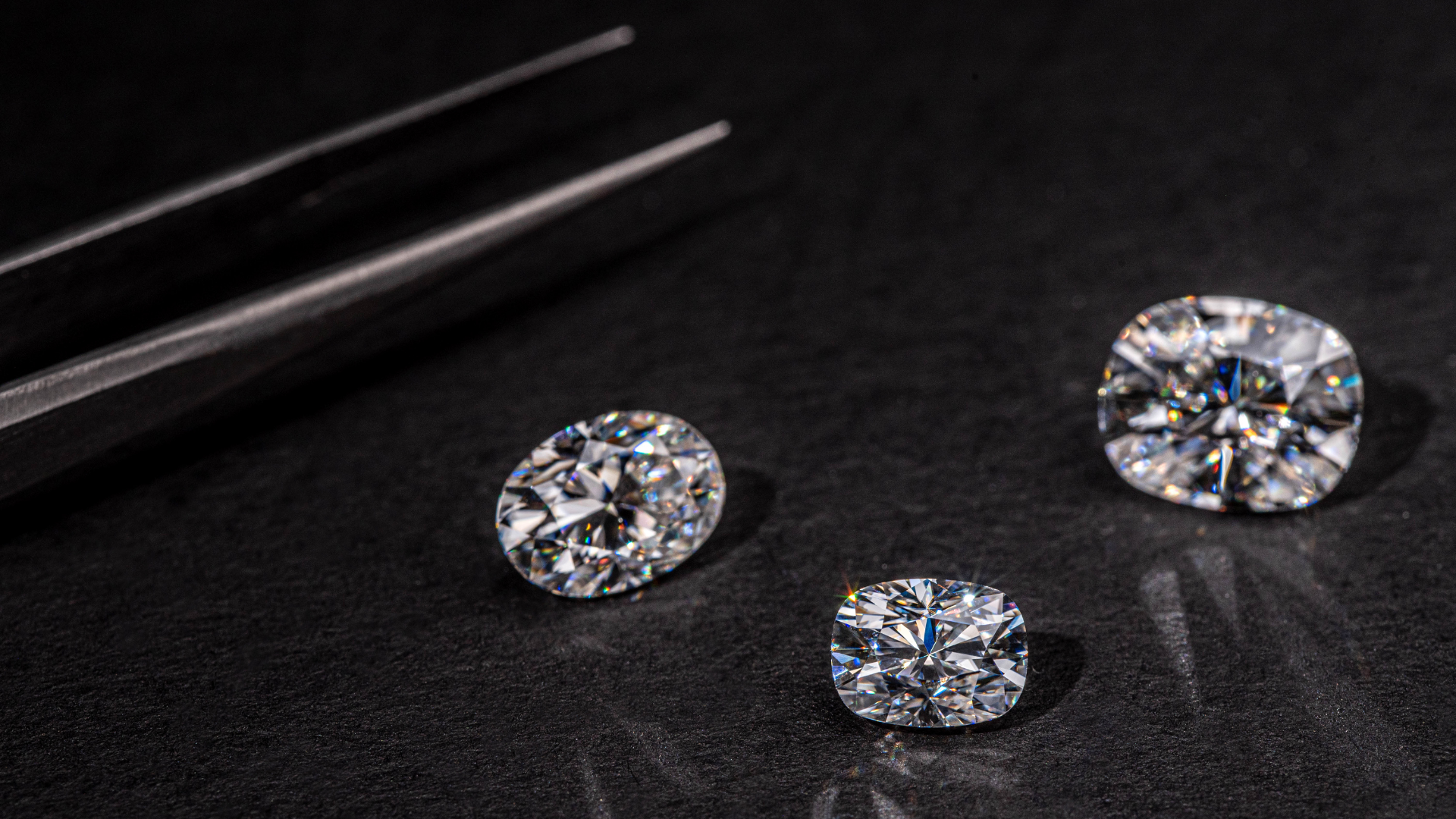
First Factor: Diamond Cut (Potongan)
Diamond cut is the most important factor in determining the price of a diamond. It refers to the overall style of a diamond rather than its actual shape. When we evaluate a diamond cut, both Cut Shape (Bentuk Potongan) and Cut Grade (Gred Potongan, also known as Cut Quality) will be considered.
Cut Shape
In general, diamond cut shapes can be divided into two groups, as shown in the table below.
| Round Brilliant Cut (Potongan Cemerlang Bulat) | Fancy Cut/Fancy Shaped (Potongan Istimewa) |
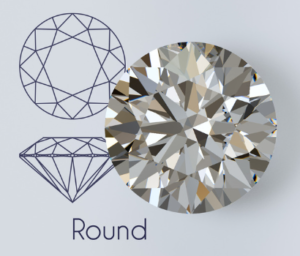 |
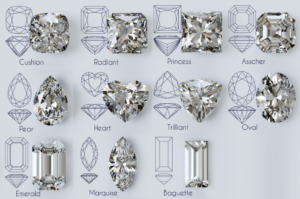 |
Among all the types of diamond cuts available in the market, diamonds with Round Brilliant (Cemerlang Bulat) have the highest price, not only because it has the highest demand but also because it has the highest number of facets that require extremely high carpentry skills to produce.
All forms of cuts other than the Round Brilliant Cut are categorized as Fancy Cut. Compared to Round Brilliant Diamonds, the demand for diamonds with Fancy Cut is lower because such cuts may affect the quality of the cut for the diamonds produced.
Typically, the price of a fancy-shaped diamond is 10-43% lower than a Round Brilliant Diamond!
Cut Grade
Rough diamonds, which are the original form of diamonds that have not been cut and polished, are opaque and have little to no sparkle. To produce an alluring diamond, rough diamonds need to be cut and polished by a gemstone cutter to add facets (or faces) to the diamond, so that it can reflect and refract light – DIAMOND SPARKLE.
The cut grade is the grade assigned to each diamond based on the type and quality of the cut produced. According to the Gemological Institute of America (GIA), the cut grade of a diamond is based on seven factors: brightness, fire (dispersion), scintillation (sparkle), weight ratio, durability, polish and symmetry.
GIA divides diamond cuts into four grades, as follows:
| Excellent | Very Good | Good | Fair & Poor |
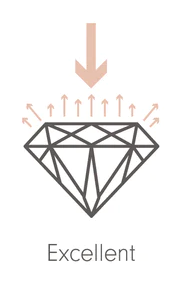 |
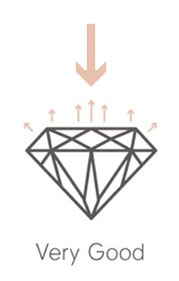 |
 |
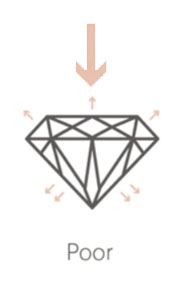 |
| This is the highest cut grade, representing 3% of the highest quality diamonds worldwide.
A diamond with an Excellent cut grade is a diamond that has maximum sparkle and brightness, with all rays of light reflected. |
This cut grade almost realizes the full potential of diamonds, and it represents 15% of the best diamonds worldwide.
Diamonds with this cut grade have excellent sparkle and brightness, with minimal light leakage. |
This cut grade represents 25% of the best diamonds worldwide.
Diamonds with this cut grade still have good sparkle and brightness, even if there is a bit of light leakage. |
Diamonds with this cut grade usually have poor or nearly no sparkle and brightness due to significant light leakage.
We recommend avoiding diamonds with such a grade. |
Second Factor: Diamond Colour (Warna)
For evaluating the colour of a diamond, diamond experts have created a colour grade scale labelled with the letters D to Z, as shown in the diagram below.

Colourless diamonds are the highest quality diamonds and are extremely rare, therefore, their price is also extremely high. Most diamonds have a faint yellow tint that is undetectable with the naked eye.
For reference, you can choose diamonds in categories I, J or K if you want to buy a diamond less than 1 carat and have a limited budget; and you can consider diamonds in categories D to H if you want to buy a diamond with 1 carat or higher.
On the other hand, diamonds in categories L to Z can be ignored since they are rarely sold by jewellery shops because of their bright and noticeable yellow tint.
Third Factor: Diamond Carat (Karat)
Diamond carat indicates the weight of the diamond and not its size (although the size of the diamond usually increases according to its weight). Each unit of a carat is equivalent to 200 milligrams, and it is measured with 100 decimal points to allow for accurate measurement.
The higher the carat of a diamond, the higher its price and the more popular it will be. However, two diamonds with the same carat may carry different values due to other factors, namely their colour, clarity and cut.
Fourth Factor: Diamond Clarity (Kejernihan)
This is the last factor that will affect the price of a diamond. The clarity of a diamond is assessed based on the number of imperfections found in the diamond. The more imperfections in a diamond, the lower its value/price.
These imperfections include both naturally formed ‘inclusions’ in the diamond (such as small cracks or small black carbon fragments) and ‘blemishes’ on the surface (scratches, spots, etc.).
The GIA divides diamond clarity into 6 categories (with 11 specific grades), as shown in the table below.
| Category/Grade | Description |
| FL – Flawless | 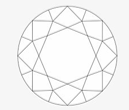
No inclusions or blemishes visible under 10x magnification |
| IF – Internally Flawless | 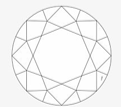
No inclusions visible under 10x magnification |
| VVS1 and VVS2 – Very, Very Slightly Included | 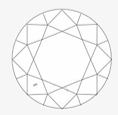
Very, very slight inclusions that are hardly detectable by a skilled appraiser under 10x magnification |
| VS1 and VS2 – Very Slightly Included | 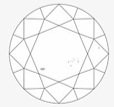
Inclusions that are visible with considerable effort under 10x magnification; can be considered a minor imperfection |
| SI1 dan SI2 – Slightly Included | 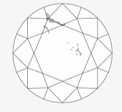
Inclusions that are visible under 10x magnification |
| I1, I2 dan I3 – Included | 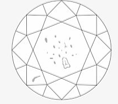
Inclusions that are visible under 10x magnification, which will affect transparency and brightness |
Now that you have finished reading this article, you can take advantage of this information, which is to consider the cut, colour, carat and clarity of the diamond whenever you want to buy, sell or pawn your diamond so that you can weigh the purchase price vs. aesthetics vs. resale value.
At Pawnzon, we accept diamond jewelry in any form, with or without official diamond certification.
If you are considering pawning your diamond, call or visit any pawn shop in the Pawnzon network for any further inquiries or a FREE price appraisal for your diamond jewellery!
